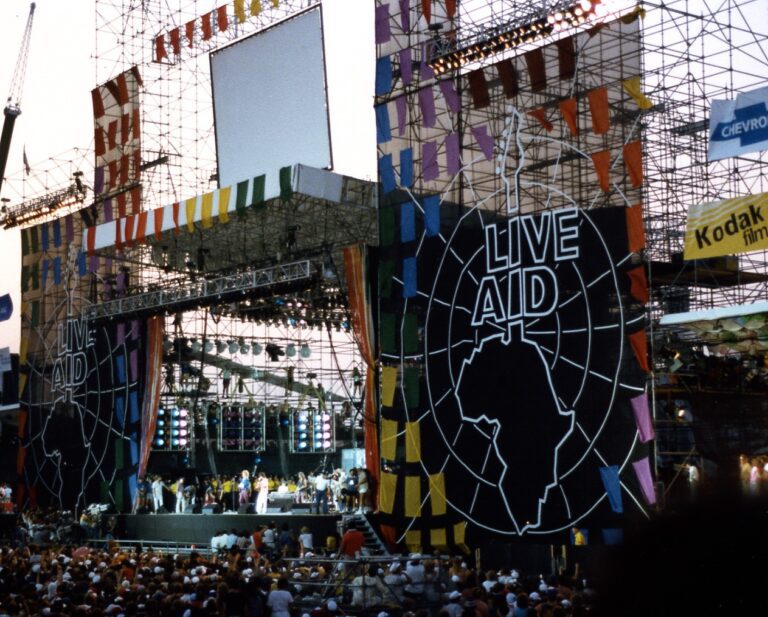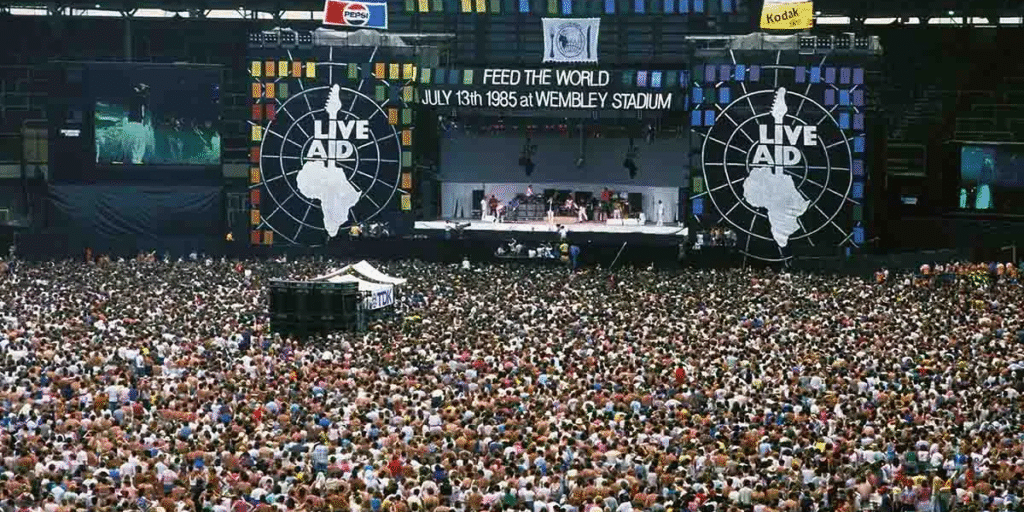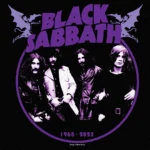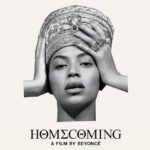
Forty years ago this month, the world stopped for Live Aid.
On 13 July 1985, two stadiums, thousands of fans, and nearly two billion TV viewers across 150 countries came together for what would become one of the most ambitious and significant live music events in history. From the moment BBC broadcaster Richard Skinner opened the broadcast with “It’s twelve noon in London, seven am in Philadelphia, and around the world it’s time for Live Aid,” the scale of the moment was clear. The concert raised an estimated £150 million for famine relief in Ethiopia and remains one of the defining pop culture moments of the 20th century.
But Live Aid wasn’t just about music. It was about reach, urgency and the potential of mass media at a time when there were no mobile phones and no social media. Just the telly, the radio, and a sense that something big was happening.
A global jukebox with a message
Conceived by Bob Geldof and Midge Ure in the wake of Band Aid’s Do They Know It’s Christmas?, Live Aid was a direct response to the Ethiopian famine, images of which had been broadcast globally just months earlier. What followed was unprecedented: a dual-venue, 16-hour benefit concert held simultaneously at London’s Wembley Stadium and Philadelphia’s John F. Kennedy Stadium, featuring the biggest names in music.
Status Quo kicked off proceedings in London with Rockin’ All Over the World, setting the tone for a day that would include appearances by Paul McCartney, David Bowie, Elton John, Madonna, U2, Duran Duran, Tina Turner, The Who, Led Zeppelin, and many more.
In Philadelphia, a rising Madonna performed Holiday and Into the Groove, before joining The Thompson Twins and Nile Rodgers for a group rendition of Revolution. Phil Collins managed to play both sides of the Atlantic, performing in London alongside Sting before flying to Philadelphia on Concorde to appear on stage again, this time with Led Zeppelin and his own solo set.
Meanwhile, Paul McCartney’s Let It Be moment in London was nearly derailed when his microphone failed. It was quickly salvaged with help from Bowie, Alison Moyet, Pete Townshend and Geldof himself, resulting in one of the most memorable and oddly touching moments of the day.
Queen’s 20 minutes that changed everything
There’s no way to talk about Live Aid without mentioning Queen. The band’s 21-minute set, delivered with razor-sharp precision and Freddie Mercury at full power, became the stuff of legend. It wasn’t just the songs – Bohemian Rhapsody, Radio Ga Ga, Hammer to Fall – but the way Mercury owned the stage, leading 72,000 people in a spontaneous call and response that felt bigger than rock’n’roll.
Years later, even industry veterans would agree: Queen didn’t just perform at Live Aid; they hijacked it.
When TV changed charity forever
One of the most pivotal moments of the broadcast wasn’t a performance at all. It came via a short film introduced by David Bowie, showing footage from famine-stricken Ethiopia, set to The Cars’ Drive. The effect was immediate and donations surged.
So too when Bob Geldof, growing increasingly frustrated with the BBC’s slow display of donation addresses, famously snapped live on air. Contrary to popular belief, he didn’t say “Give us your fucking money.” What he actually shouted, interrupting presenter David Hepworth, was: “Fuck the address, let’s get the numbers!” The moment may have been chaotic, but it got results. Phone lines jammed, viewers at home opened their wallets and a generation remembers exactly where they were when it happened.
Missing faces and questions of representation
Despite its cultural weight, Live Aid was not without criticism. The line-up was overwhelmingly white and male, with very little diversity on either side of the Atlantic. Geldof has since acknowledged this and defended the choices in the BBC’s recent documentary Live Aid at 40: When Rock’n’Roll Took on the World, saying that had an artist like Stormzy existed in 1985, they would absolutely have been invited. He also pointed out that both Michael Jackson and Prince declined to appear.
The legacy lives on
For many who watched it unfold in real time, Live Aid still feels unmatched. Michelle Visage, now a Radio 2 presenter, was 16 at the time and watching from her home in New Jersey.
“When I tell you the world stopped to watch this event, that’s not one word of a lie,” she told Radio 2’s Live Aid: The Fans’ Story. “There were no computers, no phones, it was just the telly. And I just feel lucky enough to have witnessed it live.”
Live Aid became the blueprint for large-scale musical activism. Geldof and Ure followed up in 2005 with Live 8, which shifted the focus to political pressure on G8 leaders. Two years later, Live Earth tackled climate change, led by Al Gore. But Geldof criticised the initiative for lacking a clear objective, saying music without action was just noise.
Today, Live Aid still stands as a singular moment and proof of what can happen when pop culture, political awareness and global broadcast collide.
Forty years later
Live Aid was a concert, yes, but more than that, it was a reminder of music’s power to bring people together and raise awareness that transcends entertainment. It was messy, emotional, chaotic, and human.
And that’s why, 40 years later, it’s still remembered not just as a gig, but as a global moment.





